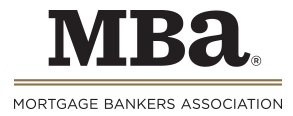WASHINGTON, D.C. – February 25, 2015 – (RealEstateRama) — The delinquency rate for mortgage loans on one-to-four-unit residential properties decreased to a seasonally adjusted rate of 5.68 percent of all loans outstanding at the end of the fourth quarter of 2014. This was the lowest level since the third quarter of 2007. The delinquency rate decreased 17 basis points from the previous quarter, and 71 basis points from one year ago, according to the Mortgage Bankers Association’s (MBA) National Delinquency Survey.
The delinquency rate includes loans that are at least one payment past due but does not include loans in the process of foreclosure. The percentage of loans in the foreclosure process at the end of the fourth quarter was 2.27 percent, down 12 basis points from the third quarter and 59 basis points lower than the same quarter one year ago. This was the lowest foreclosure inventory rate seen since the fourth quarter of 2007.
The percentage of loans on which foreclosure actions were started during the fourth quarter was 0.46 percent, an increase of two basis points from the previous quarter, but was eight basis points below the level of the fourth quarter of 2013.
The serious delinquency rate, the percentage of loans that are 90 days or more past due or in the process of foreclosure, was 4.52 percent, a decrease of 13 basis points from last quarter, and a decrease of 89 basis points from the fourth quarter of 2013.
“Delinquency rates and the percentage of loans in foreclosure decreased for another quarter and were at their lowest levels since 2007,” said Marina Walsh, MBA’s Vice President of Industry Analysis. “We are now back to pre-crisis levels for most measures.”
Walsh continued: “The foreclosure inventory rate has decreased every quarter since the second quarter of 2012, and is now at the lowest level since the fourth quarter of 2007. Foreclosure starts ticked up two basis points, after being flat last quarter, largely due to state-level fluctuations in the speed of the foreclosure process. Compared to the same quarter last year, foreclosure starts are down eight basis points.
“At the state level, 45 states saw a decline in their foreclosure inventory rates over the quarter, although judicial states continue to account for a disproportionately high share. Fewer than half the states had an increase in non-seasonally adjusted 30 day delinquencies, which is highly seasonal and usually increases in the fourth quarter. Foreclosure starts increased in 28 states, but this has become more volatile, with recent state-level mediation requirements and changing laws, as well as servicer procedures, dictating the changes from quarter to quarter.
“States that utilize a judicial foreclosure process continue to have a foreclosure inventory rate that is roughly three times that of non-judicial states. For states where the judicial process is more frequently used, 3.79 percent of loans were in the foreclosure process, compared to 1.23 percent in non-judicial states. States that utilize both judicial and non-judicial foreclosure processes had a foreclosure inventory rate closer that of to the non-judicial states at 1.43 percent.
“Legacy loans continue to account for the bulk of all troubled mortgages. Within loans that were seriously delinquent (either more than 90 days delinquent or in the foreclosure process), 73 percent of those loans were originated in 2007 and earlier. More recent loan cohorts, specifically loans originated in 2012 and later, continue to exhibit low serious delinquency rates.
“We expect the improvement in mortgage performance to continue due to the improving economy and a strengthening job market, and the improved credit quality of recent vintages.”
Change from last quarter (Third Quarter of 2014)
On a seasonally adjusted basis, the overall delinquency rate decreased 17 basis points for all loan types to 5.68 percent. The seasonally adjusted delinquency rate decreased eight basis points to 2.97 percent for prime fixed loans and decreased six basis points to 4.77 percent for prime ARM loans. For subprime loans, the delinquency rate decreased 38 basis points to 17.60 percent for subprime fixed loans and decreased 24 basis points to 19.63 percent for subprime ARM loans. The FHA delinquency rate rose by four basis points to 9.73 percent and VA delinquency rate fell by 30 basis points to 4.98 percent.
The non-seasonally adjusted percentage of loans in foreclosure, also known as the foreclosure inventory rate, decreased from last quarter to 2.27 percent. The foreclosure inventory rate for prime fixed loans decreased eight basis points to 1.18 percent and the rate for prime ARM loans decreased 25 basis points from last quarter to 2.74 percent. For subprime loans, the rate for subprime fixed loans decreased by one basis point to 7.89 percent and the rate for subprime ARM loans decreased 47 basis points to 14.15 percent. The foreclosure inventory rate for FHA loans decreased 21 basis points to 2.52 percent while the rate for VA loans decreased by nine basis points to 1.39 percent.
The non-seasonally adjusted foreclosure starts rate increased four basis points for prime fixed loans to 0.24 percent and remained unchanged for prime ARM loans at 0.44 percent. For subprime fixed loans, the foreclosure starts rate increased 15 basis points to 1.60 percent and decreased 24 basis points for subprime ARM loans to 1.94 percent. For FHA loans, the unadjusted foreclosure starts rates decreased by six basis points to 0.61 percent while the foreclosure starts rate increased by four basis points for VA loans to 0.36 percent.
Change from last year (Fourth Quarter of 2013)
Given the challenges in interpreting the true seasonal effects in these data when comparing quarter to quarter changes, it is important to highlight the year-over-year changes of the non-seasonally adjusted results.
Compared with the fourth quarter of 2013, the foreclosure inventory rate decreased 38 basis points for prime fixed loans, decreased 111 basis points for prime ARM loans, decreased 39 basis points for subprime fixed, decreased 133 basis points for subprime ARM loans, decreased 75 basis points for FHA loans, and decreased 39 basis points for VA loans.
Over the past year, the non-seasonally adjusted foreclosure starts rate decreased six basis points for prime fixed loans, decreased 15 basis points for prime ARM loans, increased 13 basis points for subprime fixed, increased three basis points for subprime ARM loans, decreased 14 basis points for FHA loans, and decreased 11 basis points for VA loans.
If you are not a member of the media and would like to purchase the survey, please visit www.mortgagebankers.org/NDS or e-mail ">.
© 2015 Mortgage Bankers Association (MBA). All rights reserved, except as explicitly granted.
Data are from a proprietary paid subscription service of MBA and are provided to the media as a courtesy, solely for use as background reference. No part of the data may be reproduced, stored in a retrieval system, transmitted or redistributed in any form or by any means, including electronic, mechanical, photocopying, recording or otherwise. Permission is granted to news media to reproduce limited data in text articles. Data may not be reproduced in tabular or graphical form without MBA’s prior written consent.
The above data were obtained in cooperation with the Mortgage Bankers Association (MBA), which produces the National Delinquency Survey (NDS). The NDS, which has been conducted since 1953, covers 41 million loans on one- to four- unit residential properties, representing approximately 88 percent of all “first-lien” residential mortgage loans outstanding in the United States. This quarter’s loan count saw a decrease of 160,000 loans from the previous quarter, and an increase of 500,000 loans from one year ago. Loans surveyed were reported by approximately 110 lenders, including mortgage bankers, commercial banks, and thrifts.
###
The Mortgage Bankers Association (MBA) is the national association representing the real estate finance industry, an industry that employs more than 280,000 people in virtually every community in the country. Headquartered in Washington, D.C., the association works to ensure the continued strength of the nation’s residential and commercial real estate markets; to expand homeownership and extend access to affordable housing to all Americans. MBA promotes fair and ethical lending practices and fosters professional excellence among real estate finance employees through a wide range of educational programs and a variety of publications. Its membership of over 2,200 companies includes all elements of real estate finance: mortgage companies, mortgage brokers, commercial banks, thrifts, Wall Street conduits, life insurance companies and others in the mortgage lending field. For additional information, visit MBA’s Web site: www.mba.org.











